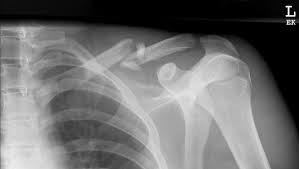In Swoboda v Fontanetta, 2015 NY Slip Op 06804 [131 AD3d 1042], the New York Supreme Court, Appellate Division, Second Department reversed a trial court order for summary judgment in an action for medical malpractice.
The plaintiff underwent surgery on her right shoulder in 2007, which was performed by the defendant physician at the defendant hospital. Following the surgery, the plaintiff felt pain in her clavicle area, but did not inform her doctor because she assumed the pain was normal. The plaintiff then visited her doctor’s office, due to the pain and swelling in her clavicle area, but the doctor simply stated that she was feeling pain due to a muscle and sent her home without conducting an examination.
A week later, the plaintiff returned to her doctor’s office complaining of pain in the clavicle area. An examination and X Ray revealed that swelling and a fracture of the mid-shaft of the plaintiff’s clavicle.
Both the plaintiff and her husband commenced this action to recover damages for medical malpractice arguing that plaintiff’s clavicle was fractured during the surgery, and relying up the doctrine of res ipsa loquitur. Under the doctrine of res ipsa loquitur, the plaintiff provides that in some circumstances the occurrence itself demonstrates negligence. The plaintiff therefore implies that the accident would not have happened without the defendant’s negligence.
The Supreme Court, the trial court in New York, granted summary judgment for the defendant hospital and dismissed the plaintiff’s complaint. The Supreme Court found that the defendants successfully established that there was not a physician-patient relationship present between the plaintiff and the parent company of a management company that provided administrative support to the hospital where the plaintiff had her operation. It is well settled law that there must be a physician-patient relationship in order to establish liability for medical malpractice. A physician-patient relationship can only be established when a physician’s professional services are rendered to and accepted by another for medical or surgical treatment. The Supreme Court properly held that the defendants did not have a physician-patient relationship with the plaintiff because they simply were the parent company of a management company that provided administrative support to the hospital where the plaintiff had her operation.
However, the Appellate Division, Second Department, ruled that the defendants’ (the hospital, physician, physician’s employer, the anesthesiologist, and the anesthesiologist’s employer) motions for summary judgment should have been denied and reversed the trial court’s order. The Second Department found that there are still triable issues of fact regarding the defendants’ liability under the doctrine of res ipsa loquitur. When a plaintiff relies the on the doctrine of res ipsa loquitur in a medical malpractice action, the plaintiff must establish that the defendant had exclusive control and the absence of contributory negligence. Contributory negligence on the part of the plaintiff would demonstrate that the event was caused in part by the plaintiff.
Therefore, in order to successfully assert a medical malpractice claim under the doctrine of res ipsa loquitur the plaintiff must demonstrate that the injury had the greatest probability of being caused by the defendant. The plaintiff is not required to eliminate the possibility of all other possible causes for the injury. The doctrine of res ipsa loquitur is commonly used when there is an inexplicable injury to the plaintiff in a body part, which was not location of the medical treatment. Additionally the plaintiff is not required to pinpoint the specific negligent party in a medical malpractice actions, particularly in instances where the plaintiff was under anesthesia.
The Second Department found that there were triable issues of fact in terms of the defendant’s liability under res ipsa loquitur and accordingly reversed the trial court’s order. This case will be placed on the trial calendar.
http://www.nycourts.gov/reporter/3dseries/2015/2015_06804.htm




